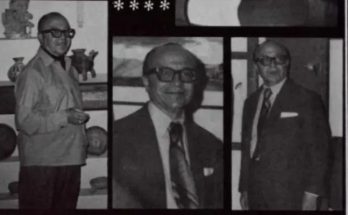By Luis Felipe Rodriguez
Francisco—Pancho—lived during a time when La Terraza restaurant had large windows. There was the house where Don Daniel sold clothes, and his office and warehouse were downstairs. Next door was the paletería «la Gardenia,» the ice cream shop owned by Don Wenceslao Tovar, and later his son Benito. Further down was Benigno Torres’s shoe store; the «La América» store of Alfredo García González; on the corner, was «La Palma» owned by Merced Sandoval; and Héctor Origel Murillo had Omur Laboratories on the corner of San Francisco and Corregidora. In the lower part of the Guadalupe portal, in front of the shoe store, there were stalls with bread, sweets, soft drinks, and cigarettes.
Pancho remembered having a cupcake and a Victoria, although it was not the beer we know today, it was more like a soft drink. In the afternoons Pancho’s eyes lit up when at that time of day, the stalls were filled with snacks. Many families, delighted San Miguel de Allende residents, and tourists alike enjoyed taquitos, enchiladas, gorditas, broth, and golden chicken, and even prickly pairs. There were some tables with chairs so people could sit down.
People spent a lot of time around the Jardin. The country folks walked around the outer edge, and the city dwellers walked around the inner ring. Older people and some married couples sat on the low perimeter walls. It was also a place where young people fell in love, particularly on Sundays. They would promenade around the Jardin, some in one direction, and others in the opposite direction watching each other to see who would go with whom. Afterwards, the courtship continued in places like Parque Juarez, El Chorro, or outside the brides’ houses. In those days, music bands performed in the central gazebo, touching hearts and cheering the spirits of those present. Later there was even danzón for those who wanted to dance. Cars were allowed then in the area, and people parked in front of the Parroquia, and next to the Jardin. Young people would offer their services as tour guides or to wash the cars.
Buses to and from Mexico City and Guadalajara arrived every day at 9:30 in the morning, and the tourists stayed at the San Francisco Inn. Years later, tourist buses connecting San Miguel and Celaya arrived in the center of San Miguel, and bus offices were in La Terraza.
Pancho, his father, and Vicente Zúñiga sold the Sol de León newspaper. That is why he became known as “el sol,” and the moniker remained with him through his life. The Bugambilia Restaurant was owned by the Arteaga family, who for many years was the social heart of San Miguel. It was there, at Bugambilia, that the Sunday newspaper called “El Fisgón Anteojudo” was started in 1948. At first it was a single-sided sheet where Don Manuel made brief comments or criticisms among friends. But it had such a positive impact that he started making more copies. Eventually, the paper was printed on a mimeograph and sold in Bugambilia and other places like Los Panchos. It was delivered from house to house; my wife and sister-in-law Paty were vendors.
I continue with the memory about all that was present at the Allende portal. On the main level there was the Banco de Comercio and the internationally renowned bar, Cucaracha. Later there was a clothing store there. It belonged to Doña Tere García and her husband, Don Goyo Mayagoytia, owners of the Mayorazgo Palace—the home of the De la Canal family.
Pancho was married to María de los Ángeles Chavarría Ortega for more than 30 years. He had a son, Paco, who followed his father’s trade. Pancho believed in the golden rule: «Treat others as you want them to treat you.» He was against speaking ill of someone, avoided bad relationships with friends and clients, and respected friendship. He never asked for something that he could not deliver. Because of these things, he won the good appreciation of many people who loved him.
This is how Pancho, Francisco González Sánchez, «el sol,» thought and lived. May God receive him and reward him for the exemplary life he led. Rest in peace, my friend.




